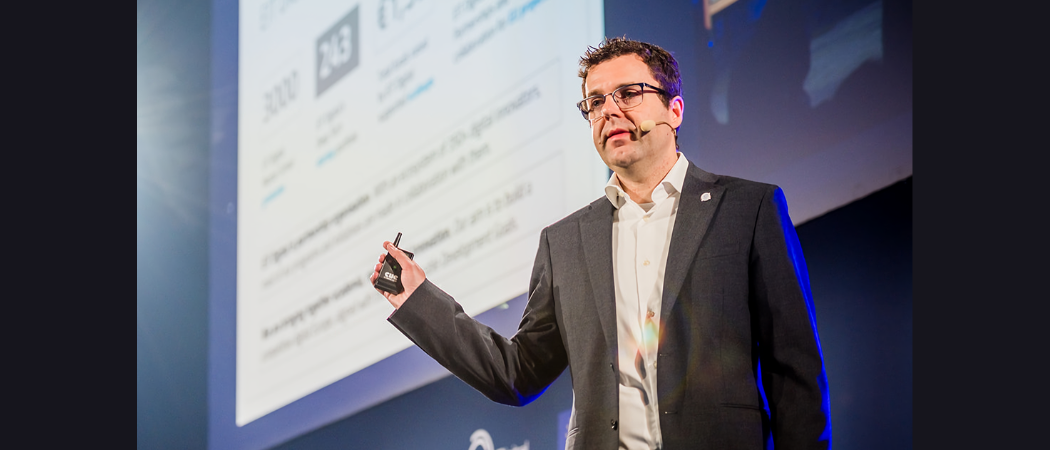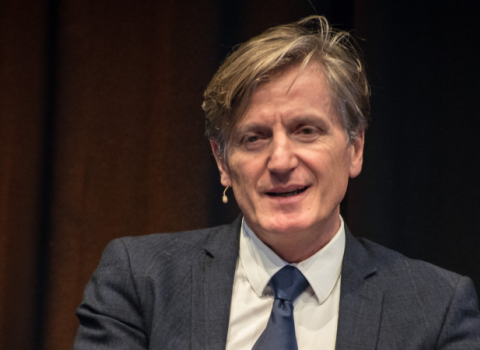The first batch of EU-funded innovation networks is preparing to cut the apron strings. Here’s how EIT Digital plans to secure its future by becoming a link between industry and the public sector

Federico Menna, CEO of EIT Digital. Photo: EIT Digital
EIT Digital is eyeing a future as a connector between the public and the private in the digital innovation ecosystem, as it prepares to become independent from its parent EU agency, the European Institute of Innovation and Technology (EIT).
Set up in 2010, EIT Digital was one of the first three EIT knowledge and innovation communities (KICs) funded by the EU research programmes, alongside counterparts EIT Climate-KIC and EIT InnoEnergy.
The KICs were due to become financially independent of EIT within seven to 15 years, receiving grants to get off the ground and build capacity and gradually weaning themselves off EU funding. Now, as the 15-year deadline looms, the first batch of KICs are set to become financially sustainable from 2025.
But with freedom comes responsibility, and the KICs have been racking their collective brains on how to best run their operations past 2024. When drafting its plans for financial independence, EIT Digital first had to decide whether it should become a company or a non-governmental organisation.
EIT Digital decided to operate both as a way to bridge the public and private worlds, Federico Menna, CEO of EIT Digital, told Science|Business in an interview about the KIC’s future.
“Digital is everywhere and we’re playing in a spot that has these two legs,” says Menna. “In digital, there are already specialised organisations in the two domains, but nobody is really in the middle like us connecting the two and bridging them.”
On the business side, EIT Digital hopes to keep its services running – an innovation education programme and a business accelerator for companies trying to scale up, among others – and continue managing its investment portfolio of 253 companies.
On the public side, it aims to connect stakeholders by offering access to its pan-European innovation network in various EU research projects. This part of the business has taken off in the past year: EIT Digital has gone from taking part in three Horizon Europe projects to 22. Enabling the interchange between the business network and the EU research ecosystem is EIT Digital’s biggest strength, according to Menna.
And now the network is expanding east, to get the Widening countries, mostly based in central and eastern Europe,which tend to underperform in EU research programmes, more involved in EU innovation ecosystems.
When a region is ready to invest in building up innovation ecosystems, EIT Digital will come in and set up an office, bringing its services to the region. One such office is set to open in October in Cluj-Napoca in Romania. Another two have been set up in Estonia and Scotland. Greece is expected to welcome an EIT Digital hub next.
But Menna admits EIT Digital can’t do it all and without EIT funding, it’s likely the balance of activities will have to be reworked in order not to spread too thin. "We may decide to drop a few areas if they don't deliver the income we expect,” says Menna. He mentions hackathons in particular haven’t been making the money needed to keep running them.
And financially sustainability doesn’t mean it’ll be saying goodbye to the EIT. The last dedicated grant EIT Digital gets from the parent agency is worth €30.5 million but cooperation will continue. “We believe in the EIT model,” says Menna. “We think the EIT will be one of the partners – the level we will see. But we still believe our transformation doesn’t mean we will depart from the family.”
Editor's note: this story was corrected on 10 July to clarify the EIT KICs have up to 15 years to become financially sustainable.





 A unique international forum for public research organisations and companies to connect their external engagement with strategic interests around their R&D system.
A unique international forum for public research organisations and companies to connect their external engagement with strategic interests around their R&D system.